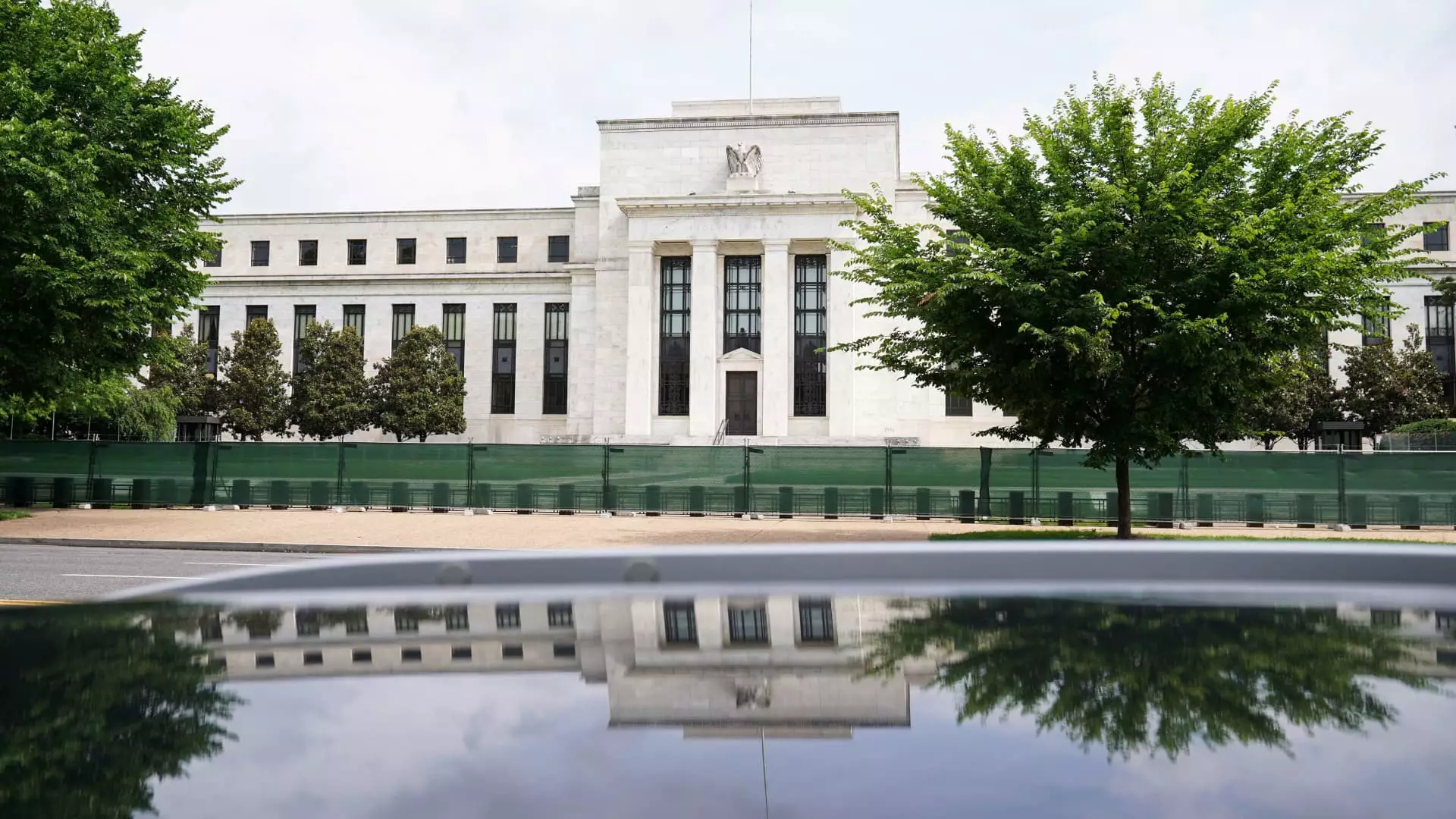As the Federal Reserve gears up for its upcoming monetary policy meeting on December 18, the financial world is anticipating yet another quarter-point interest rate cut. This prospective decision highlights a critical turning point in economic management, as it would constitute the third cut in a row since September, effectively reducing the federal funds rate by a full percentage point. The Fed’s current approach indicates a response to the recent economic challenges brought about by high inflation rates, which reached a staggering 40-year peak. However, the trajectory of these cuts raises fundamental questions regarding their long-term effectiveness and the implications for various consumer markets.
The dynamics of monetary policy are rarely straightforward. According to Jacob Channel, a senior economic analyst at LendingTree, the December cut might be the last reduction for some time. This speculation suggests a cautious strategy in light of uncertainties surrounding fiscal policies anticipated from a newly re-elected president. The Fed’s methodical approach signifies an effort to recalibrate a rapidly expanding economy, and yet, it leaves many consumers grappling with the repercussions of high borrowing costs across multiple sectors.
The federal funds rate governs how banks lend to one another overnight, influencing a myriad of borrowing and savings options available to everyday consumers. Despite recent reductions, the real question arises: how effectively do these changes trickle down into consumer credit rates? If the Fed executes a cut, the overnight borrowing rate may drop to a range of 4.25% to 4.50%. While this adjustment appears to alleviate financial tensions, Brett House, an economics professor at Columbia Business School, argues that relief will not be uniformly experienced across all sectors.
For many consumers, the immediate impact of rate cuts is felt through credit cards, which often have variable interest rates dependent on the Fed’s benchmark. After significant rate hikes, average credit card interest soared to around 20.25%, marking a concerning trend for households carrying debt. Despite recent cuts, analysts like Greg McBride at Bankrate highlight a lagging reaction from card issuers. The delay in adjusting interest rates means that consumers burdened with credit card debt may not see substantial relief for months, if at all, after the Fed’s decision. In fact, McBride suggests that a far more effective strategy for those in debt is to seek 0% balance transfer credit cards to manage their finances more effectively during this turbulent period.
The housing market presents another layer of complexity regarding interest rate cuts. Most mortgage rates are fixed and intricately linked to Treasury yields rather than directly influenced by the Fed’s policies. As of early December, the average rate for a 30-year fixed-rate mortgage stands at approximately 6.67%. Although this figure shows signs of stabilization compared to previous months, it remains significantly higher than the recent low witnessed in September. Experts caution that mortgage rates are poised for continued fluctuations, primarily dictated by economic conditions rather than direct changes in the Fed’s policies.
As consumers consider buying houses, many will find themselves locked into current fixed rates unless they pursue refinancing options, which may not be beneficial for all. Channel warns that predicting future movements in mortgage rates remains elusive, further complicating the decision-making process for potential buyers or those contemplating refinancing.
Auto Loans and Consumer Financing Challenges
Auto loans introduce additional considerations within the consumer financing landscape. While these loans typically come with fixed rates, rising vehicle prices have resulted in larger loan amounts, placing a financial strain on borrowers. As the average loan nears $40,000, even slight reductions in rates may not significantly ease the burden imposed by escalating monthly payments. McBride emphasizes that despite potential future cuts, current high sticker prices remain a primary concern that overshadows rate adjustments for prospective car buyers.
Moreover, student loans, particularly those with private funding, present a mixed picture. While federal student loan rates remain stable, private loans may adjust in response to Fed rate cuts. However, transitioning from federal to private loans could mean relinquishing essential safety nets traditionally offered to borrowers, such as income-driven repayment plans and loan forgiveness options. Higher education expert Mark Kantrowitz underscores the importance of understanding these trade-offs before making refinancing decisions.
Despite the direct impact of rate cuts on borrowing costs, the situation is not entirely bleak for consumers. The yields on high-yield savings accounts have contemplated upward adjustments in response to the Fed’s earlier rate hikes. With many accounts currently offering nearly 5%, this represents a beneficial scenario for savers in an otherwise challenging economic environment. As McBride notes, this could turn out to be a fruitful period for those looking to bolster their savings.
While the Federal Reserve’s anticipated interest rate cuts may signal a milder economic climate, the ramifications for consumers are nuanced and multifaceted. Borrowing costs, savings potential, and market conditions intermingle in a complex web of financial realities that require careful navigation. As the Fed adopts a wait-and-see stance in the wake of changing economic conditions, consumers must remain vigilant and informed to make prudent financial decisions.

